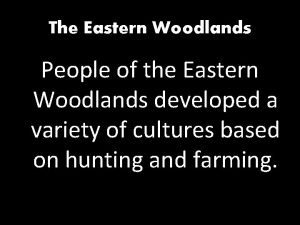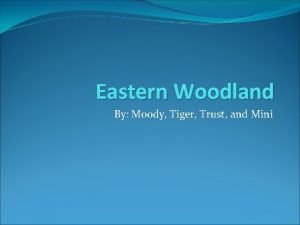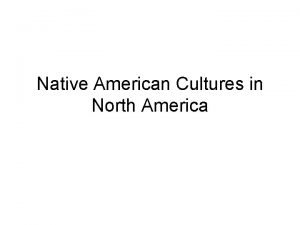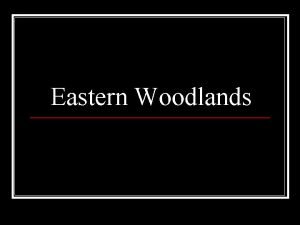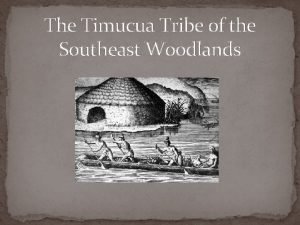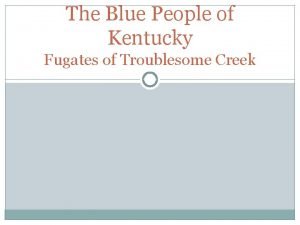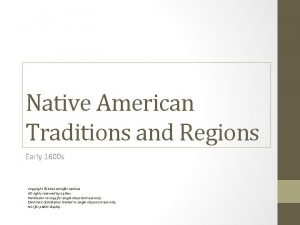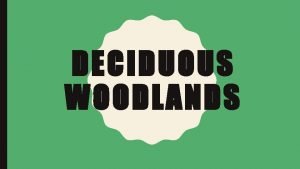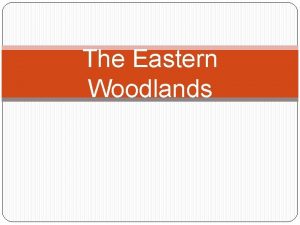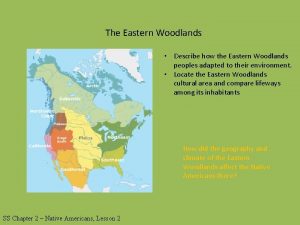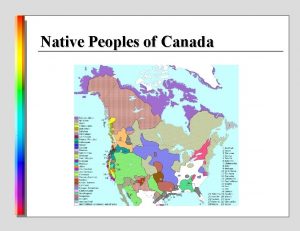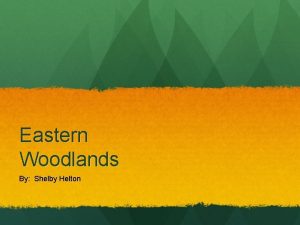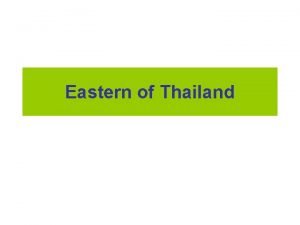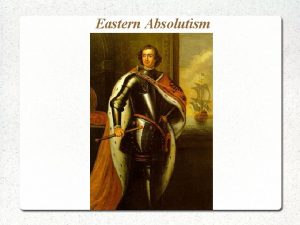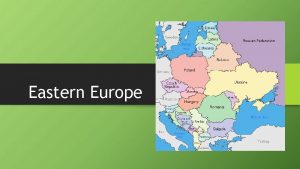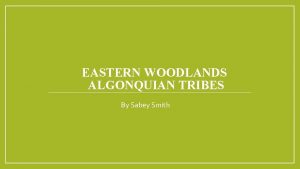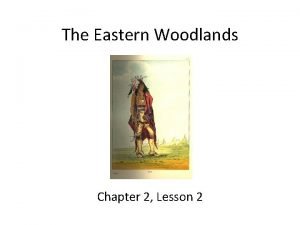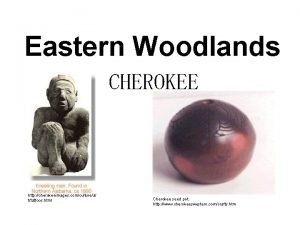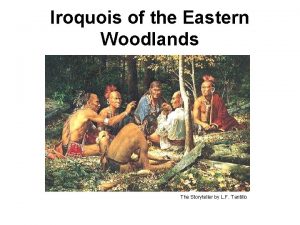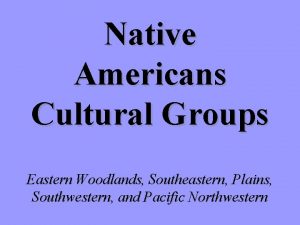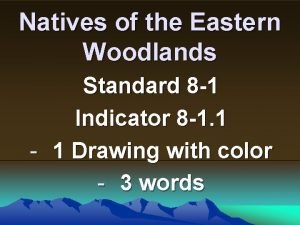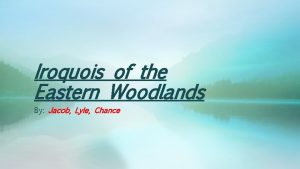The Eastern Woodlands People of the Eastern Woodlands





















- Slides: 21

The Eastern Woodlands People of the Eastern Woodlands developed a variety of cultures based on hunting and farming.

The Iroquois

The Eastern Woodlands

The Eastern Woodlands The legend of Deganawidah (day gahn uh WEE duh) having a vision of ending the bloody battles helped to save many lives.

The Eastern Woodlands The legend continues with the belief that Hiawatha (high uh WAH thuh) convinced five warring group to join together in a “Great Peace. ”

The Iroquois League consisted of five tribes including the Seneca, Cayuga, Onondaga, Oneida, and Mohawk.

The Eastern Woodlands Later, a sixth tribe, the Tuscarora, joined the Iroquois league.

The Eastern Woodlands The five tribes sent 50 representatives – all men – to a Great Council.

The Eastern Woodlands The Iroquois Trail linked the lands of the League. Today, the New York Thruway follows part of the route of the Iroquois Trail.

The Iroquois lived in the Eastern Woodlands region. This thick forest area provided an endless supply of wood.

Living in the Woodlands The people hunted animals that were plentiful They used the skins and furs of these animals for clothing

Longhouse The families lived in a “longhouse” that was made from young trees and slabs of elm bark.

Longhouse

Longhouse • A longhouse could be as long as 150 feet, half of a football field. • Each longhouse was divided into living areas for as many as 12 different families.

Beliefs and Customs Like other Native Americans, the Iroquois felt a deep connection to the animals, the trees, and other resources around them.

Beliefs and Customs When an Iroquois hunter killed a deer, he knelt beside it and spoke to it. He thanked it for the food and clothing it would provide for his family. Only then did he take out his skinning knife.

Beliefs and Customs A wampum belt An Iroquois wampum might serve as a gift was often to honor a marriage. made from It might even be polished given to comfort seashells someone after the that were woven into death of a loved a belt. one.

The Iroquois Today There about 50, 000 Iroquois today. Many live on reservations – land set aside by the United States for Native Americans – in northern New York state.

The Iroquois Today League members, mainly from the Mohawk tribe, have become skilled builders of city skyscrapers. They are known as “high iron” men, putting up girders as high as a thousand feet above the ground.

Native Americans of North America A “Red-Wing” finish line production of LES© Created by: Billy Hopkins

Native Americans of North America • Late 1500’s Iroquois lands – Five tribes join to form the Iroquois league • Late 1700’s Cheyenne lands – The Cheyenne use of horses brings changes to their way of life • Today Hopi lands- Hopi villages include Oraibi, probably the oldest town in the United States. • Today Kwakiutl lands – Potlatches are held among the Kwakiutl and other Northwest Coast Indians.
 Eastern woodlands customs
Eastern woodlands customs Eastern woodlands homes
Eastern woodlands homes Eastern woodland shelter
Eastern woodland shelter Where did the kwakiutl live
Where did the kwakiutl live Eastern woodland tribes
Eastern woodland tribes What region
What region Facts about the timucua tribe
Facts about the timucua tribe Eastern woodlands landforms
Eastern woodlands landforms Kwakiutl food
Kwakiutl food Methemoglobinemia punnett square
Methemoglobinemia punnett square Blue family of kentucky
Blue family of kentucky Woodlands ring secondary school
Woodlands ring secondary school Woodlands ring primary
Woodlands ring primary From woodlands to plains
From woodlands to plains Resources.woodlands-junior.kent
Resources.woodlands-junior.kent The learning zoo the woodlands
The learning zoo the woodlands Gersmehl model deciduous woodland
Gersmehl model deciduous woodland Aon hewitt jobs
Aon hewitt jobs Primary care network map
Primary care network map Transformed people transform people
Transformed people transform people Justpeople
Justpeople Definition of people as media
Definition of people as media
